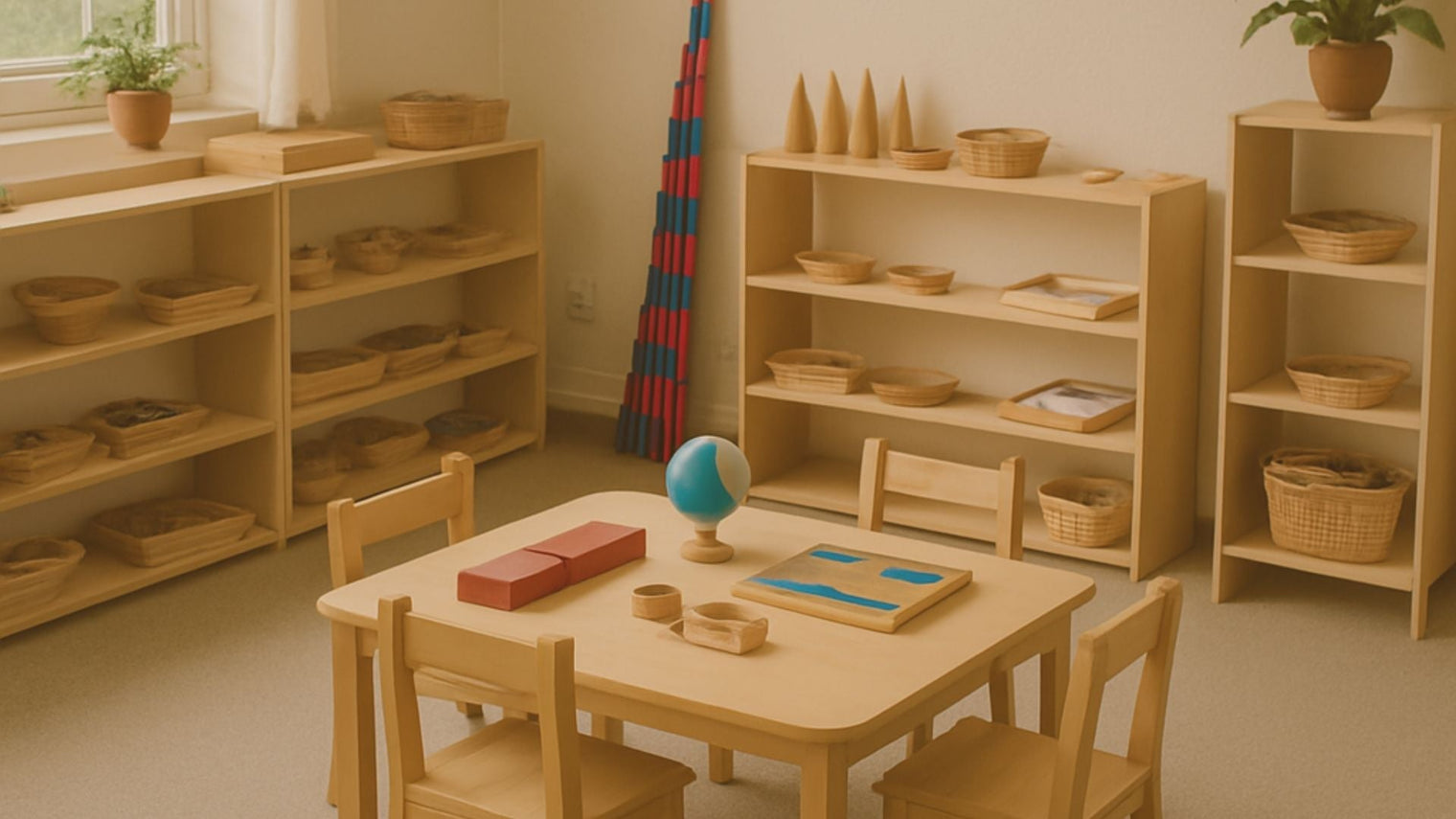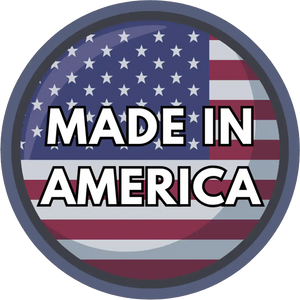A child’s environment plays a powerful role in shaping how they learn, explore, and grow.
When a space is cluttered and overwhelming, children often feel distracted and frustrated. But when everything has its place, kids naturally develop independence, confidence, and focus.
That’s why Montessori-inspired furniture, especially toy shelves with integrated storage, has become such an essential part of organized learning spaces.
Montessori shelves are more than just storage—they’re carefully designed tools that support a child’s sense of order and autonomy.
With the right setup, children can easily see their toys, choose what to play with, and return items when they’re done.
For parents, this means less chaos, more structure, and a home or classroom that feels peaceful and purposeful.
At Dannico Woodworks, we believe that furniture should not only be beautiful and durable but also nurture a child’s development.
Our toy shelves with integrated storage are designed with this mission in mind: to simplify parents’ lives while giving children the freedom to explore in a well-organized environment.
In this article, we’ll walk through what makes a Montessori toy shelf effective, the features to look for, and why integrated storage is such a game-changer for families.
Child-Led Learning and Independence
The Montessori method emphasizes child-led learning and independence.
In this approach, children are given the freedom to choose activities that interest them, fostering intrinsic motivation.
Montessori toy shelves are designed to be accessible and child-friendly, allowing children to manage their environment and choose their activities, which enhances their decision-making skills and self-confidence.
Designing for Accessibility
In a Montessori setting, accessibility is paramount. Montessori toy shelves are crafted with open storage at a child's height, enabling them to see and reach their toys and learning materials without adult assistance.
This design encourages self-reliance, as children can easily select and return items, promoting a sense of responsibility and autonomy in their learning process.
Encouraging a Sense of Order
An organized space helps children develop a sense of order, which is a fundamental aspect of Montessori education.
The neat arrangement of toys and materials on the shelves teaches children to categorize and organize, reinforcing their understanding of order and sequence.
This skill is crucial as it lays the foundation for logical thinking and problem-solving abilities.
The Benefits of Montessori Toy Shelves
Montessori toy shelves with integrated storage offer numerous advantages for creating effective learning environments:
Encouraging Independence and Choice

Montessori shelves provide the perfect platform for this by allowing children to select and return materials independently.
This fosters a sense of control over their learning process, building confidence and encouraging a proactive attitude towards exploration and discovery.
Supporting Developmental Growth
Montessori toy shelves are designed to support various developmental areas. The open layout and easy access to different materials encourage fine and gross motor skills as children manipulate items.
Cognitive development is promoted through activities that require critical thinking and problem-solving, while social interaction is enhanced as children engage in shared play and collaborative exploration.
Aesthetic Appeal and Functionality
For interior designers, finding the right balance between style and practicality is crucial.
Montessori shelves boast a minimalist and elegant design that complements any space while providing essential functionality.
Their neutral tones and natural materials ensure they blend seamlessly with various home or classroom decor styles, making them a versatile choice for any environment.
Durability and Safety
Safety is paramount when selecting furniture for children. Montessori toy shelves are typically constructed from high-quality, non-toxic materials, ensuring durability and safety.
Features like rounded edges and sturdy construction minimize the risk of injury, providing peace of mind for educators and parents.
The robust build ensures longevity, making them a wise investment in any educational setting.
Selecting the Right Montessori Toy Shelf
When choosing a Montessori toy shelf, consider the following factors to ensure it meets the needs of your space and the children using it:
Assessing Size and Space
Evaluate the available space and select a shelf size that fits comfortably within the environment.
It's essential to ensure the shelf height is appropriate for the children's age group to maintain accessibility.
A well-proportioned shelf allows for easy navigation and use, facilitating a clutter-free and organized learning area.
Choosing Material and Finish
Opt for shelves made from natural, sustainable materials like wood, which are both durable and environmentally friendly.
A smooth finish with non-toxic paint or varnish is crucial for safety and maintaining the shelf's appearance over time.
The quality of materials not only affects the shelf's longevity but also its aesthetic appeal and environmental impact.
Exploring Storage Options
Consider the integrated storage options that best suit your needs. Open shelves, cubbies, and bins can accommodate various toys and materials, keeping the space organized and easy to navigate for children.
The choice of storage solutions should reflect the diversity of activities and materials used, allowing for a dynamic and adaptable learning environment.
Emphasizing Flexibility and Adaptability
Choose shelves that can adapt to the changing needs of the environment.
Modular shelves or those with adjustable components can be easily reconfigured to accommodate new materials or adapt to different age groups.
This adaptability ensures that the learning environment remains relevant and engaging as children grow and their interests evolve.
Implementing Montessori Shelves in Various Settings
Montessori toy shelves are versatile and can be effectively incorporated into a range of settings, from classrooms to homes to therapy centers.
In Early Childhood Education
In preschool or daycare environments, Montessori shelves support educators in creating a structured yet flexible learning space.
By organizing materials by subject or activity, teachers can facilitate seamless transitions and encourage self-directed learning.
The strategic placement of shelves can also optimize classroom flow, reducing distractions and enhancing focus.
In Family Homes
For interior designers, incorporating Montessori toy shelves into family home designs offers a unique opportunity to blend aesthetics with functionality.
These shelves provide a dedicated space for children's activities within shared family areas, promoting a harmonious balance between adult and child needs.
The integration of these shelves into home design can transform living spaces into nurturing environments that support family interaction and learning.
In Therapeutic Settings
Pediatric occupational therapists can utilize Montessori shelves to create a supportive environment for therapy sessions.
The accessible design and organized layout facilitate the use of therapeutic tools and activities, enhancing children's developmental progress and independence.
Tailoring the shelves to specific therapeutic needs can maximize their effectiveness, making therapy more engaging and productive.
FAQs
What age is a Montessori toy shelf best for?
Montessori shelves are designed for toddlers and preschoolers, usually starting from around 12 months when children begin walking. They remain useful through the early years of elementary school.
How many toys should be on a Montessori shelf?
Experts recommend keeping 6–10 toys on display at a time. This prevents clutter and helps children stay focused.
Do I need special Montessori toys for the shelf?
Not at all. While Montessori materials are wonderful, any toy that encourages creativity, problem-solving, or open-ended play can fit. The key is to display them in an orderly, accessible way.
Why not just use a toy box?
Toy boxes often lead to clutter, with children dumping everything out to find what they want. Shelves allow toys to be visible, accessible, and respected.
How do integrated storage shelves compare to standard shelves?
Integrated storage shelves combine display and organization. They make it easier to rotate toys, store extras, and teach children categorization—all in one compact unit.
Why Parents Love Dannico Woodworks Montessori Shelves
At Dannico Woodworks, we know that parents want furniture that looks beautiful, lasts for years, and actually makes family life easier. That’s why our Montessori toy shelves are built with:
-
Solid wood craftsmanship for durability and safety.
-
Thoughtful design that encourages independence and order.
-
Integrated storage compartments that simplify organization.
-
Child-centered details like smooth edges, natural finishes, and timeless design.
Our goal is not just to sell furniture—it’s to create spaces where children thrive. Parents often tell us how much calmer their homes feel once their children have an organized shelf that they can manage on their own.
Conclusion
An organized learning space doesn’t just look good—it shapes how children think, play, and grow.
Montessori toy shelves with integrated storage give kids the tools to develop independence while helping parents keep their homes calm and clutter-free.
At Dannico Woodworks, we’re passionate about creating furniture that supports your child’s journey while blending seamlessly into your home.
So, what would a calmer, more organized play space mean for your family—and how could the right shelf transform the way your child learns and plays?


